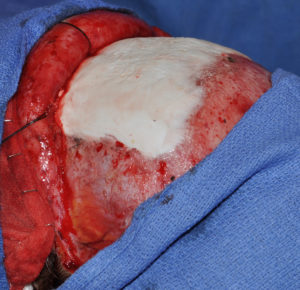The forehead occupies a third of the visible face. Because it does not have any topographic features that draw one’s attention to it like other parts of the face, its broad non-remarkable surface is not an immediate eye-catcher. But despite being relatively bland, the sheer size of the forehead does play a role in aesthetics and there are well known gender differences in its shape.
The male forehead has the topographic feature of brow bones with a forehead that is flatter and may even have a slight backward slope to it. Conversely women usually have no visible brow bones and a more convex and rounded forehead that is almost completely vertical.
For women that desire forehead augmentation there are a variety of material options to achieve a feminization effect. From bone cements to preformed implants each choice has their own unique advantages and disadvantages. To some degree they are all implant materials and the body responds to them by differing degrees of encapsulation.

While there are different forms of commercially available hydroxypatite cement for craniofacial applications, these difference are largely in the material’s handling and set properties.


